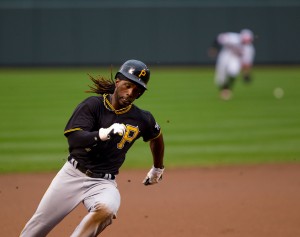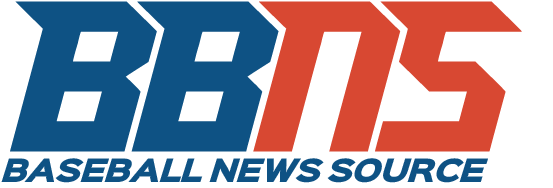Baseball players get paid.
Period.
North America’s only major team sport to operate without a salary cap has often been derided for the uneven playing field created by its lack of payroll parity, but you’ll hear no complaints coming from its player’s union.

Perhaps that’s why Major League Baseball—in the midst of a lockout-shortened 2012 NBA season, a training camp-less 2011 NFL season and a 2013 NHL season that’s balancing perilously on the edge of $100-plus million player contracts paid by teams tens of millions in the red—is in its 18th consecutive season of labor-peaceful play.
Of course, big spending doesn’t always equal big success.
Not all of MLB’s 30 member clubs are able to spend upwards of $150 million per year because of sweetheart TV deals and regular sellout crowds. Some small market clubs are forced to find success in more cost-effective ways.
For those clubs, high-value/low-cost assets are an absolute must-have in an uncapped market.
BaseballPlayerSalaries.com has a fantastic metric that calculates the most valuable players in MLB in terms of total cost against total productivity. It’s called a “Cost vs. Performance Score” (CvPS for this article).
The metric ranks baseball’s most and least productive players in terms of salary, and it’s a fantastic look at why your favorite team is performing above expectations—or, why they’re fast sinking into the red.
Here’s a look at baseball’s best values at each position, as listed by the CvPS generated scores.
LHP – Chris Sale, Chicago White Sox (4.22 CvPS)
Sale has been among the best pitchers in baseball this season, and is a big part of Chicago’s AL Central-leading 53-45 record. The left-hander has broken out in a big way this season, earning an 11-3 record in 17 starts. His 2.37 ERA is 1.63 points lower than the average ERA of all qualifying starters (4.00), and a 93-27 strikeout-to-walk ratio hasn’t hurt his stock much, either. As part of a rotation that also includes former All-Star Jake Peavy, Sale has enjoyed a breakout season in 2012, while earning just $500,000 annual salary.
RHP – Lance Lynn, St. Louis Cardinals (2.39 CvPS)
Lynn has become arguably the most important member of the Cardinals’ rotation this season. With Chris Carpenter shelved for the remainder of the year and Adam Wainwright struggling, Lynn’s 3.10 ERA and 12-4 record have helped to keep the Cardinals alive in an NL Central populated by the surprising Pittsburgh Pirates and the white-hot Cincinnati Reds. Lynn is making just $482,000 this season, though he is arbitration-eligible for each of the next five seasons. The 25 year old will be in for a healthy payraise next season.
Relief Pitcher – Pedro Strop, Baltimore Orioles (2.29 CvPS)
Strop has been huge for Baltimore’s bullpen. The right-handed reliever has compiled a miniscule 1.47 ERA in 41 appearances this season, with a 4-2 record, three saves and 16 holds. His 21 walks are a bit of a concern (compared to his 33 Ks), but a 1.14 WHIP and .189 BAA are stellar. The young reliever is making just $482,500 this season and is arbitration eligible for each of the next five years.
C – Buster Posey, San Francisco Giants (2.50 CvPS)
A former-fifth overall pick, Buster Posey has become one of the best young catchers in the game. Posey missed most of the 2011 season after a home plate collision left him with major knee injuries, but he has come back strong in 2012 to compile a .313/.379/.500 line with an .879 OPS and 99 hits in 88 games. He leads all MLB catchers with 60 RBI and his 3.3 WAR adds to his value. Posey is making $615,000 this season but figures to earn a long-term contract soon.
1B – Paul Goldschmidt, Arizona Diamondbacks (2.49 CvPS)
Goldschmidt, in his first full season as an MLB player, has been a good value addition for the low-spending Diamondbacks. The right-handed infielder is hitting for a .292/.362/.533 line with 13 home runs and 46 RBI, and at just $1,487 per at-bat is one of the best values in baseball. At 24, Goldschmidt is earning $482,000 this season but is arbitration-eligible through 2017. Arizona is a small market team with a traditionally low payroll, so it will be interesting to see what he can earn next season if his solid play continues.

Sale has helped to stake the White Sox to the AL Central lead (Keith Allison / flickr)
2B – Darwin Barney, Chicago Cubs (3.46 CvPS)
One of the few bright spots for the otherwise dreadful Chicago Cubs, second baseman Darwin Barney is one of the best-value infielders in the game and just ahead of Pittsburgh’s Neil Walker in terms of CvPS at second base. While his stats don’t stand out like Walker’s, his value relative to team payroll is much greater. Barney accounts for just .57 percent of the Cubs’ payroll but 40 percent of the team’s on-field production, according to BaseballPlayerSalaries.com. His .996 fielding percentage is among the best in baseball and likely accounts for his high score. With a deal worth just $500,000, his CvPS is huge for the struggling Chicago squad.
3B – Brett Lawrie, Toronto Blue Jays (3.18 CvPS)
Toronto may be in fifth place in a deadly AL East division, but not for the play of their up-and-coming third baseman. Lawrie is hitting .288/.343/.468 for Toronto and has made just 12 errors in 89 games at third base (.957 fielding percentage). His $482,500 base salary in 2012 makes him one of the best bang-for-the-buck players in baseball, and at just 22 years old the British Columbia native figures to continue improving.
SS – Ian Desmond, Washington Nationals (2.25 CvPS)
Desmond is a bit of a late bloomer but has enjoyed a fine year with the surging Washington Nationals. The former Montreal Expos draft pick leads all NL shortstops with 17 home runs and 53 RBI and his .286 average is well above the .255 average BA for NL shortstops. His $512,500 salary this season makes him a very affordable piece for a Nationals squad that is adding salary and collecting wins.
LF – Matt Joyce, Tampa Bay Rays (2.02 CvPS)
Tampa Bay has made a living of drafting and developing good talent and putting together a team that competes for the AL East crown in spite of huge salary disparities with the division’s big spenders in New York and Boston. Joyce is a former Detroit draft selection, but like so many Tampa players is producing far above what his salary would suggest. Joyce is making less than $500,000 this season but is hitting for a .278/.382/.498 line in 68 games while being able to play both corners of the outfield. A prototypical Tampa player.
CF – Andrew McCutchen, Pittsburgh Pirates (4.99 CvPS)
McCutchen may be baseball’s most valuable player as measured by any metric you can throw at him. His .370 batting average is the best in baseball, and a line of .370/.427/.636 with a 1.063 OPS, 66 RBI, 22 home runs and 129 hits is the best collection of offensive numbers in the Majors. Though McCutchen earned a six-year contract earlier this season which bought out his years of arbitration eligibility, his production against his salary this season is rightly the best in baseball. Cutch will earn just $500,000 in 2012, though his backloaded deal will pay him $14 million in 2017, the final season of his contract. The way he has played so far this season, $14 million would be about half of what McCutchen might earn on the open market.
RF – Josh Reddick, Oakland A’s (4.16 CvPS)
Reddick, a 25-year-old outfielder for the surprising Oakland A’s, has all the makings of a Billy Beane moneyballer. The young outfielder has broken out for the A’s this season, batting .272/.351/.527 with an .878 OPS and 46 RBI in 93 games. Acquired from the Boston Red Sox, Reddick has contributed plenty to Oakland’s unlikely 53-44 record in his first full season as a major league starter. At just $485,000, Reddick’s 2012 season has so far been the third-most cost-effective season in the majors, trailing only Sale and McCutchen in CvPS.
